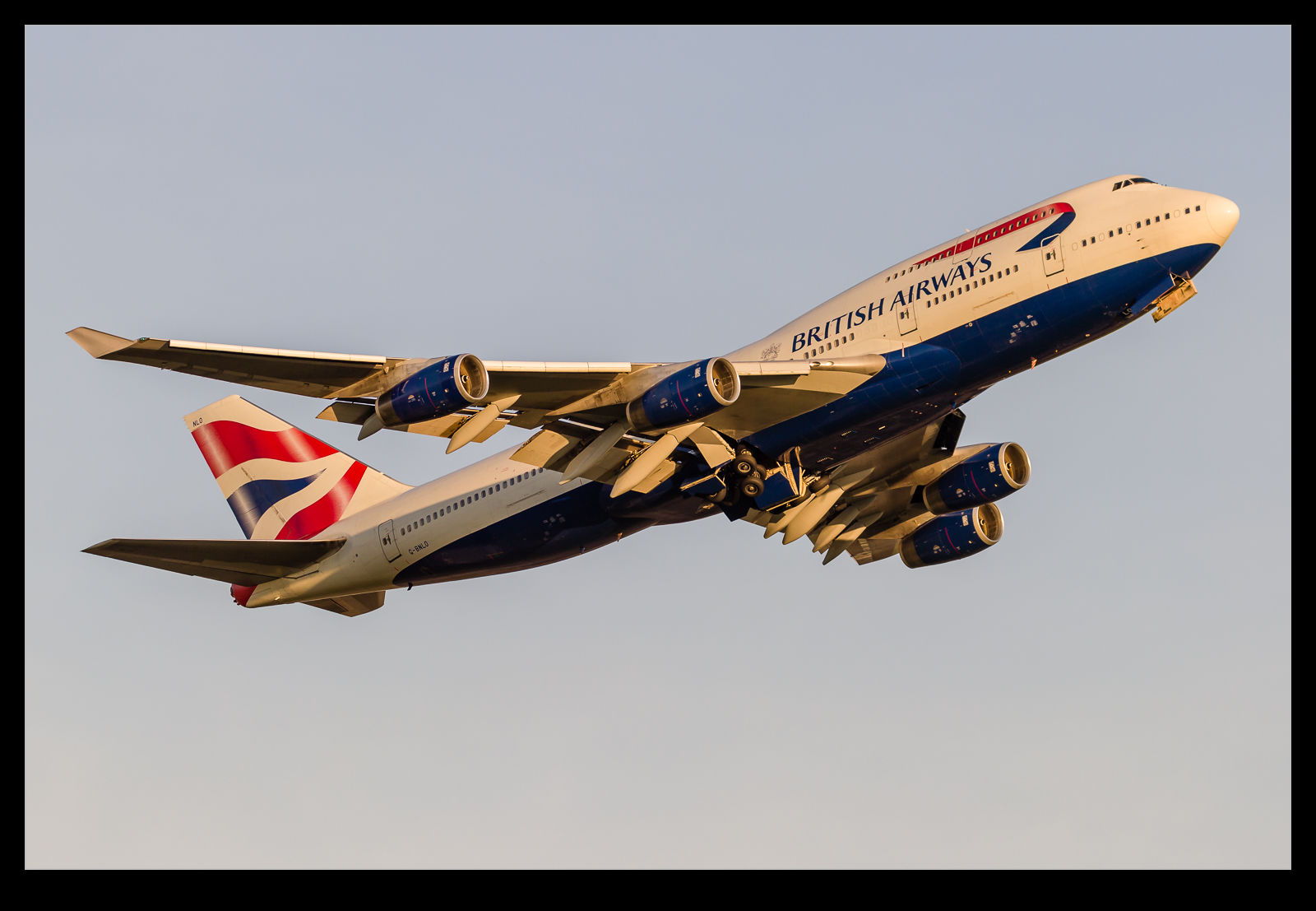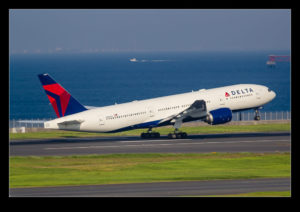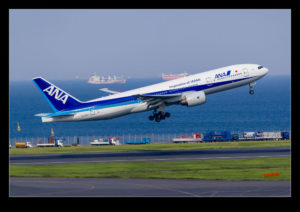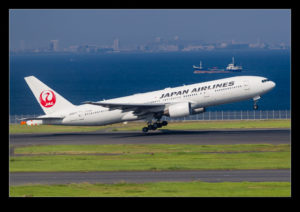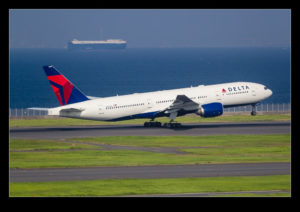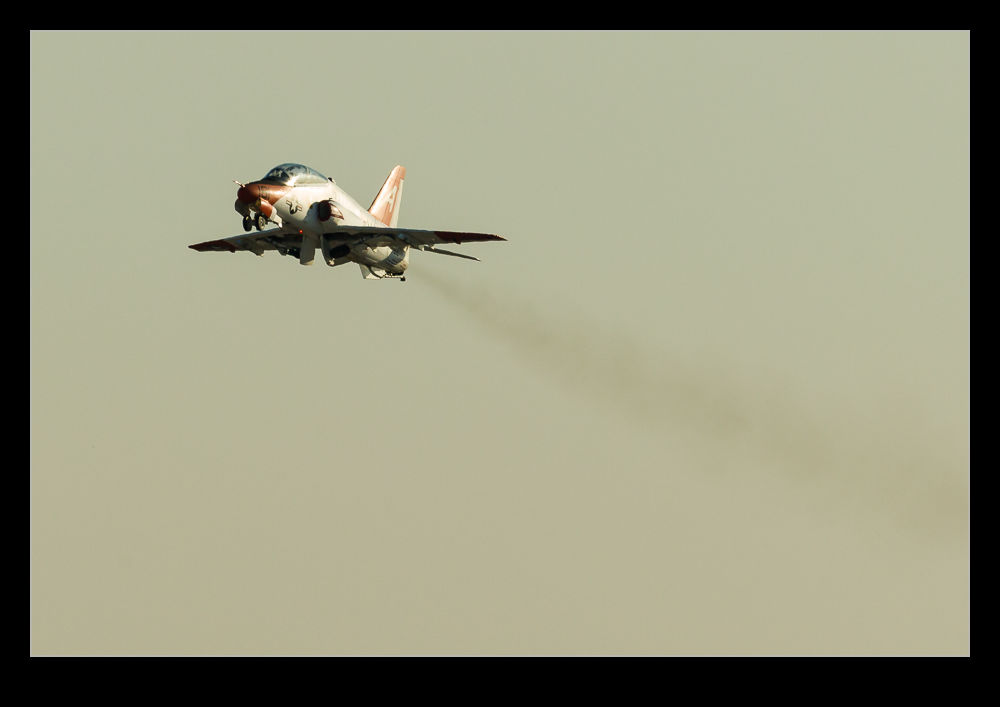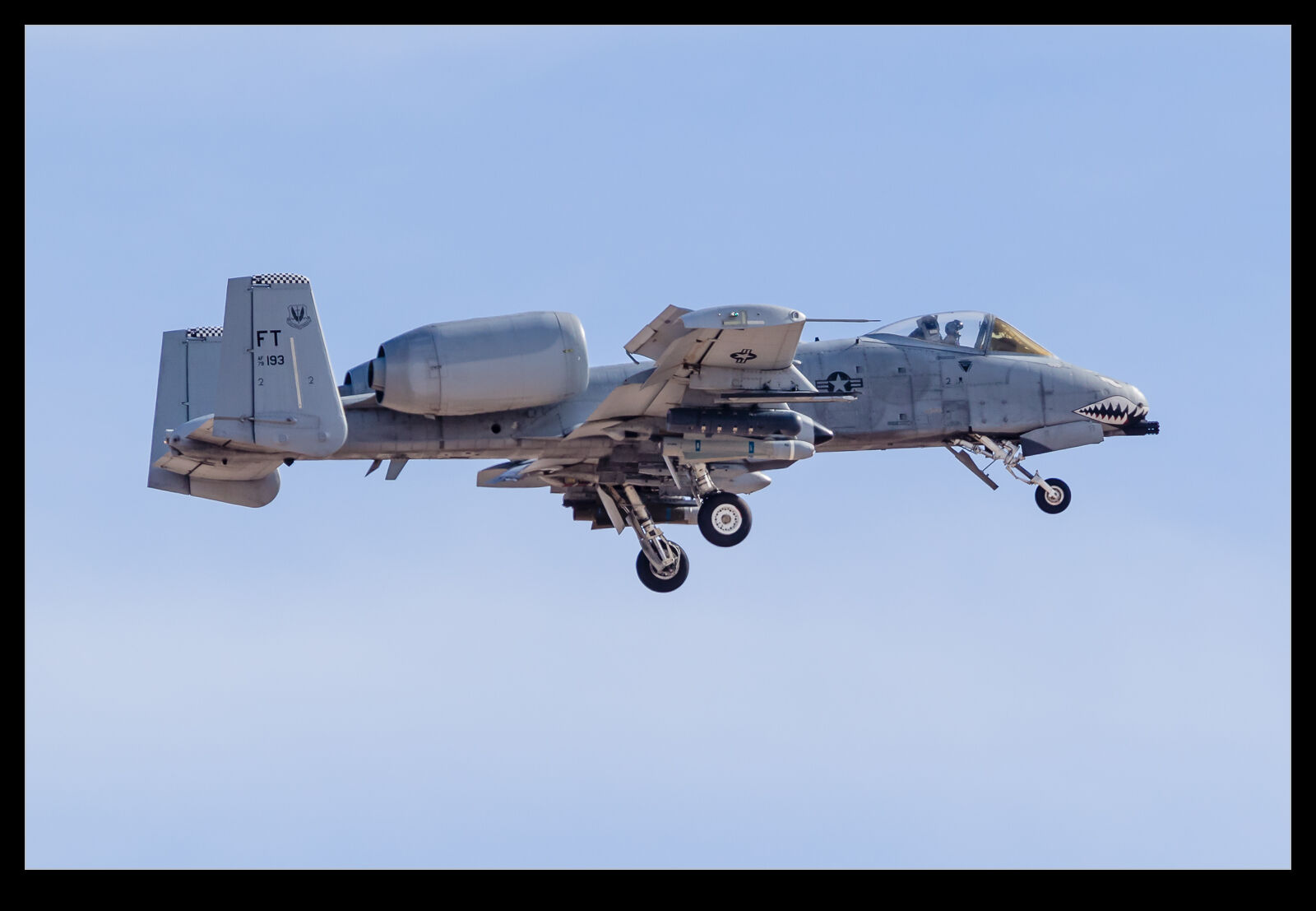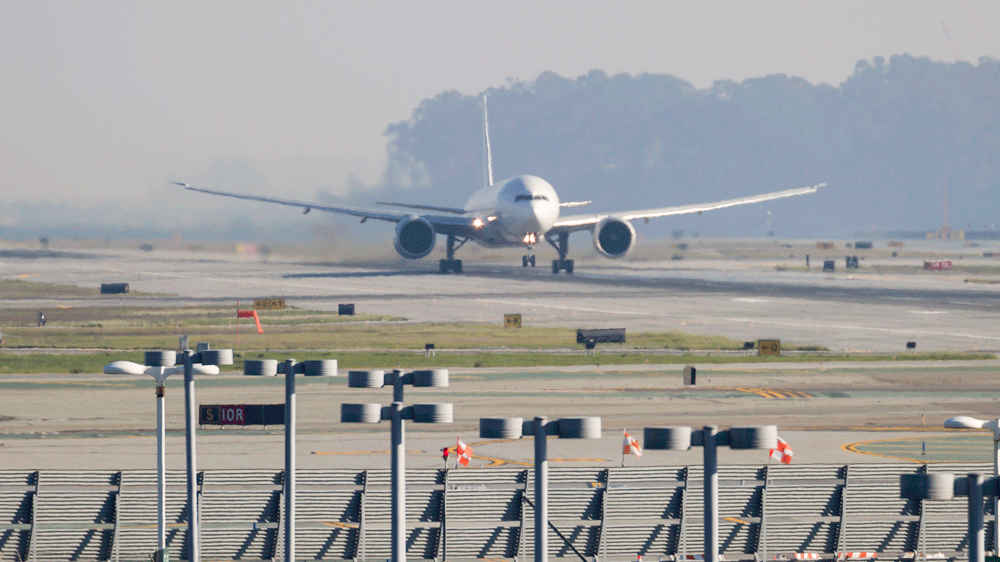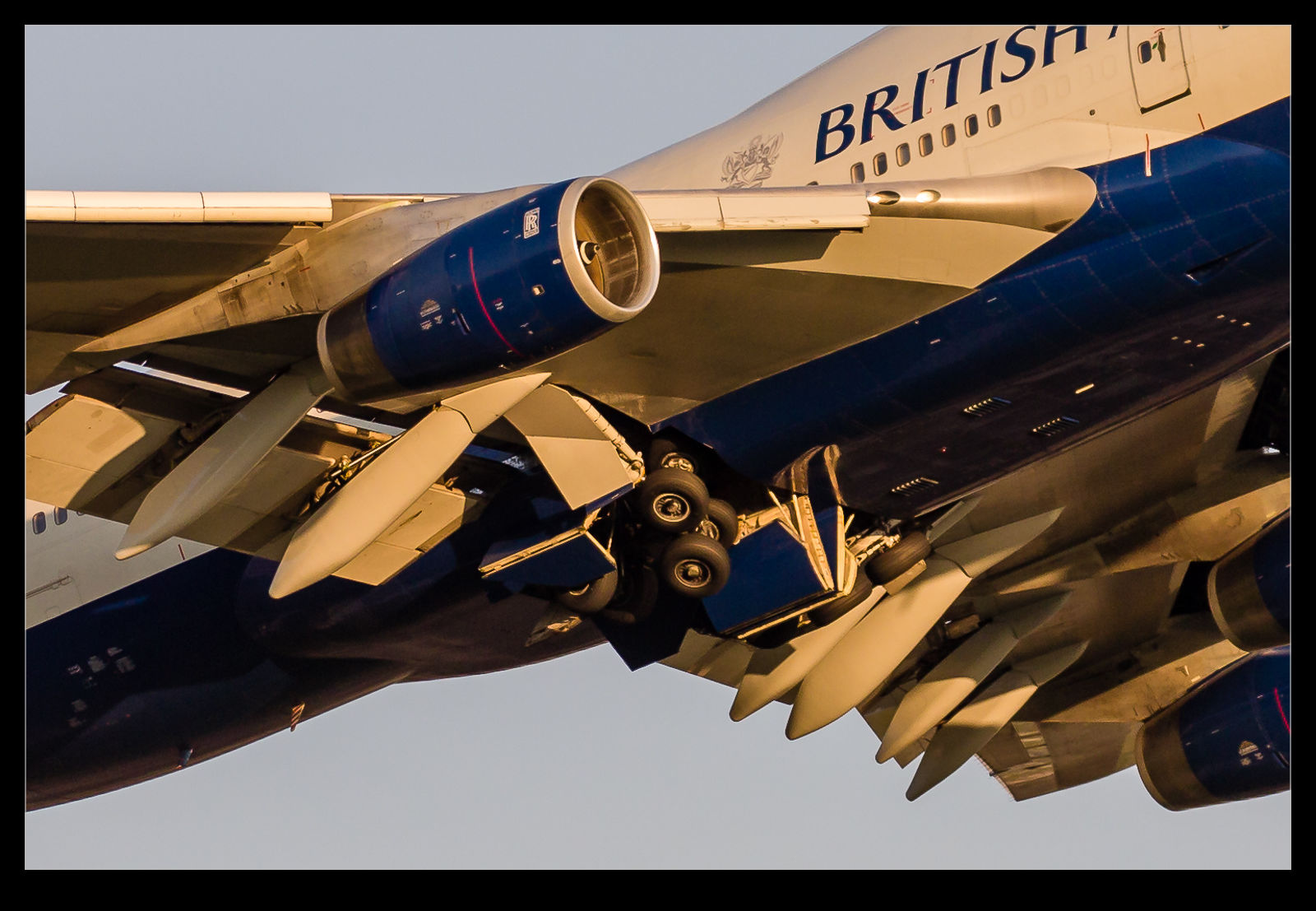 I was running back through some older shots while experimenting with some processing techniques and was looking at some British Airways 747-400 shots. With them now retired from BA service, it was a moment of reflection to see the shots again. It was also a departure sequence which meant there was a good view of the way in which the QOTS main gear tucked away. A cool looking sequence but a lot less common these days. Thank goodness for the freighters and the remaining passenger jets.
I was running back through some older shots while experimenting with some processing techniques and was looking at some British Airways 747-400 shots. With them now retired from BA service, it was a moment of reflection to see the shots again. It was also a departure sequence which meant there was a good view of the way in which the QOTS main gear tucked away. A cool looking sequence but a lot less common these days. Thank goodness for the freighters and the remaining passenger jets.
Tag Archives: gear
Plenty of 200ERs But the 300ERs Avoid Me
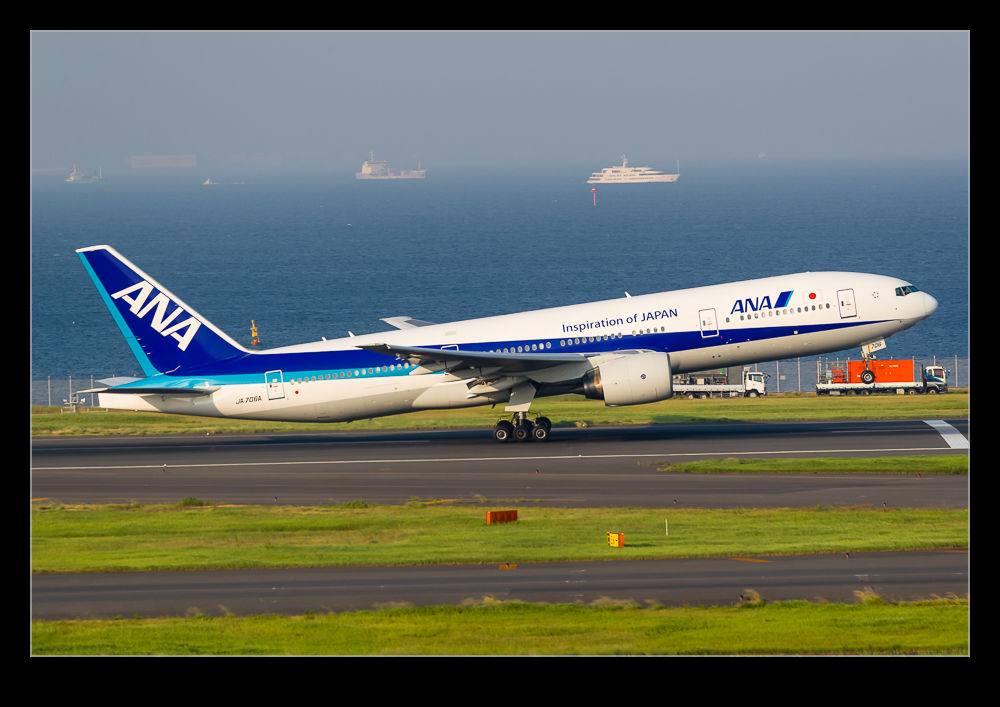 While I enjoyed my visit to Haneda earlier this year, I was a little frustrated by one thing. Regular readers will know of my interest in trying to capture the articulated gear feature of the 777-300ER. Haneda provided a great opportunity to photograph this as the departing planes were rotating almost directly in front of me. It is also an airport that gets plenty of 777s. Unfortunately, all of the ones that came my way were 200ERs. There were 300ERs departing too but they all went off the parallel runway on the opposite side of the terminal to me. I could only see them once airborne and backlit. Someone in air traffic must have been trying to thwart me!
While I enjoyed my visit to Haneda earlier this year, I was a little frustrated by one thing. Regular readers will know of my interest in trying to capture the articulated gear feature of the 777-300ER. Haneda provided a great opportunity to photograph this as the departing planes were rotating almost directly in front of me. It is also an airport that gets plenty of 777s. Unfortunately, all of the ones that came my way were 200ERs. There were 300ERs departing too but they all went off the parallel runway on the opposite side of the terminal to me. I could only see them once airborne and backlit. Someone in air traffic must have been trying to thwart me!
T-45 Nose Gear Door Sequencing
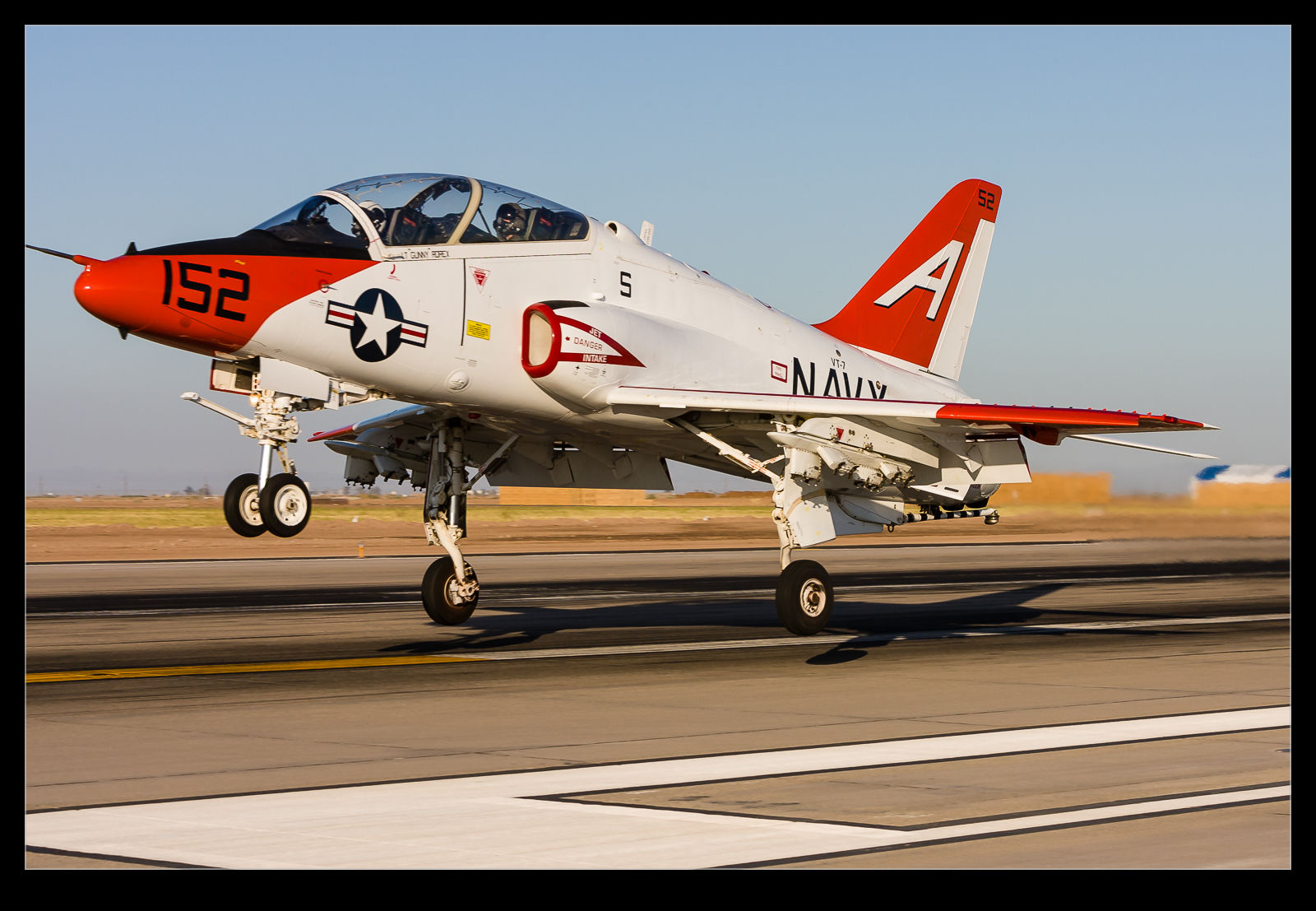 With a title like that, who could resist reading this one! The T-45 is a plane I have a close affinity with. It was my involvement with the project that first brought me to work in the US and it is responsible for me meeting Nancy. Aside from that, I got quite involved in many aspects of the plane’s design so feel like I know it quite well. It did not have a smooth entry to service and went through a multitude of upgrades prior to being accepted in to service. One of the lesser known items was the nose gear doors.
With a title like that, who could resist reading this one! The T-45 is a plane I have a close affinity with. It was my involvement with the project that first brought me to work in the US and it is responsible for me meeting Nancy. Aside from that, I got quite involved in many aspects of the plane’s design so feel like I know it quite well. It did not have a smooth entry to service and went through a multitude of upgrades prior to being accepted in to service. One of the lesser known items was the nose gear doors.
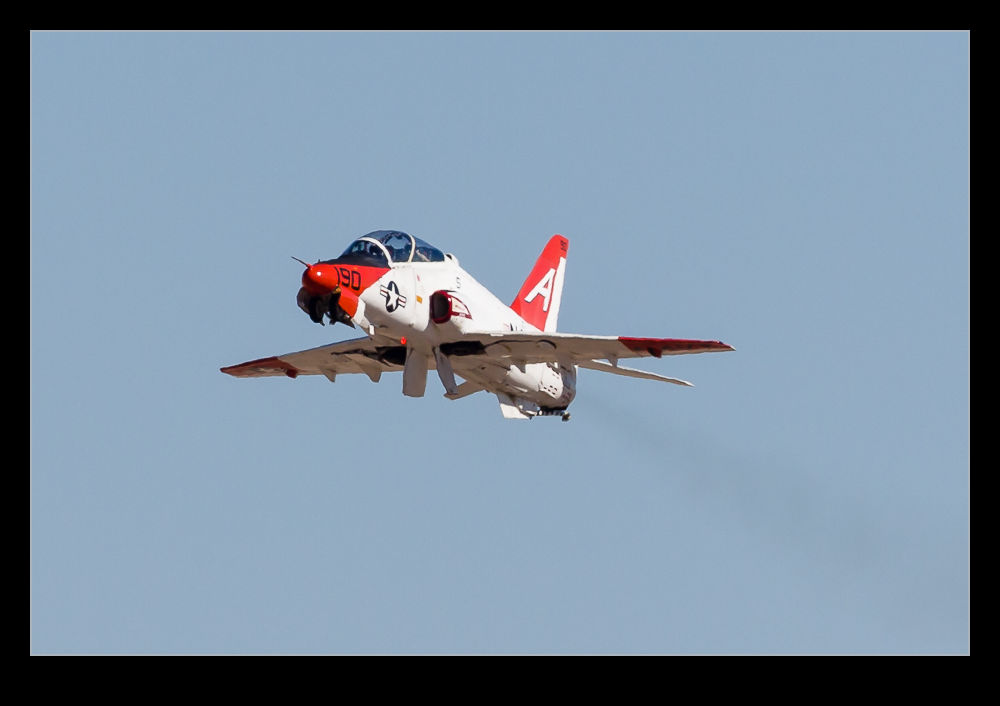 These were lumped in to a bunch of issues relating to directional stability. The front fuselage of the T-45 is considerably deeper than the original Hawk but the design originally had the same fin and actually lost the ventral fins that were either side of the airbrake on the original. Directional control was enhanced by adding a fin cap, modifying the rudder design and adding a new ventral fin on the arrestor hook fairing. One other change was made too.
These were lumped in to a bunch of issues relating to directional stability. The front fuselage of the T-45 is considerably deeper than the original Hawk but the design originally had the same fin and actually lost the ventral fins that were either side of the airbrake on the original. Directional control was enhanced by adding a fin cap, modifying the rudder design and adding a new ventral fin on the arrestor hook fairing. One other change was made too.
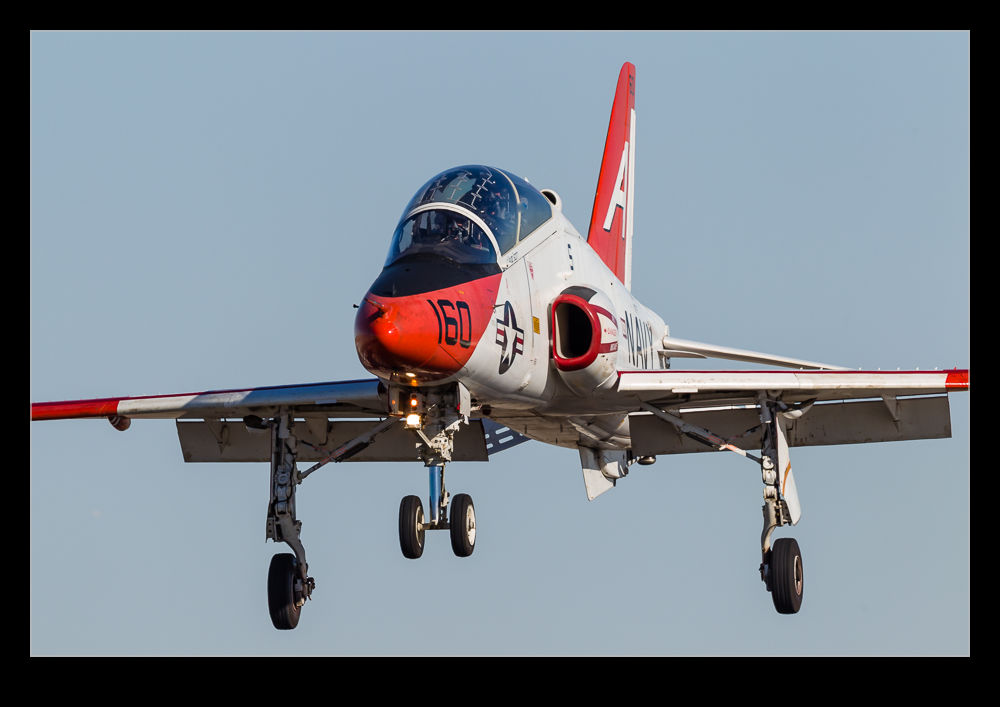 The carrier launch requirements meant the simple nose gear was replaced with a far chunkier assembly with dual wheels and the catapult launch bar, all of which was beefier enough to take the catapult launch loads. Covering this all up were big nose gear doors. These were originally either open or closed. If you look at the doors, you can see they are like adding large fins to the front fuselage. This is very destabilizing. The rear doors must stay open when the gear is down but the front doors were rescheduled to close again once the gear was down, making a substantial difference in directional stability. They have to open while the gear is transitioning and stability is reduced during this phase but it doesn’t last long. However, if you watch the retraction and extension sequence, you get a brief glimpse at how big these doors really are. From what I understand, a similar issue affected the F-35 and only the first airframe, AA-1, had the old single huge gear door.
The carrier launch requirements meant the simple nose gear was replaced with a far chunkier assembly with dual wheels and the catapult launch bar, all of which was beefier enough to take the catapult launch loads. Covering this all up were big nose gear doors. These were originally either open or closed. If you look at the doors, you can see they are like adding large fins to the front fuselage. This is very destabilizing. The rear doors must stay open when the gear is down but the front doors were rescheduled to close again once the gear was down, making a substantial difference in directional stability. They have to open while the gear is transitioning and stability is reduced during this phase but it doesn’t last long. However, if you watch the retraction and extension sequence, you get a brief glimpse at how big these doors really are. From what I understand, a similar issue affected the F-35 and only the first airframe, AA-1, had the old single huge gear door.
Late Gear Down for One Warthog
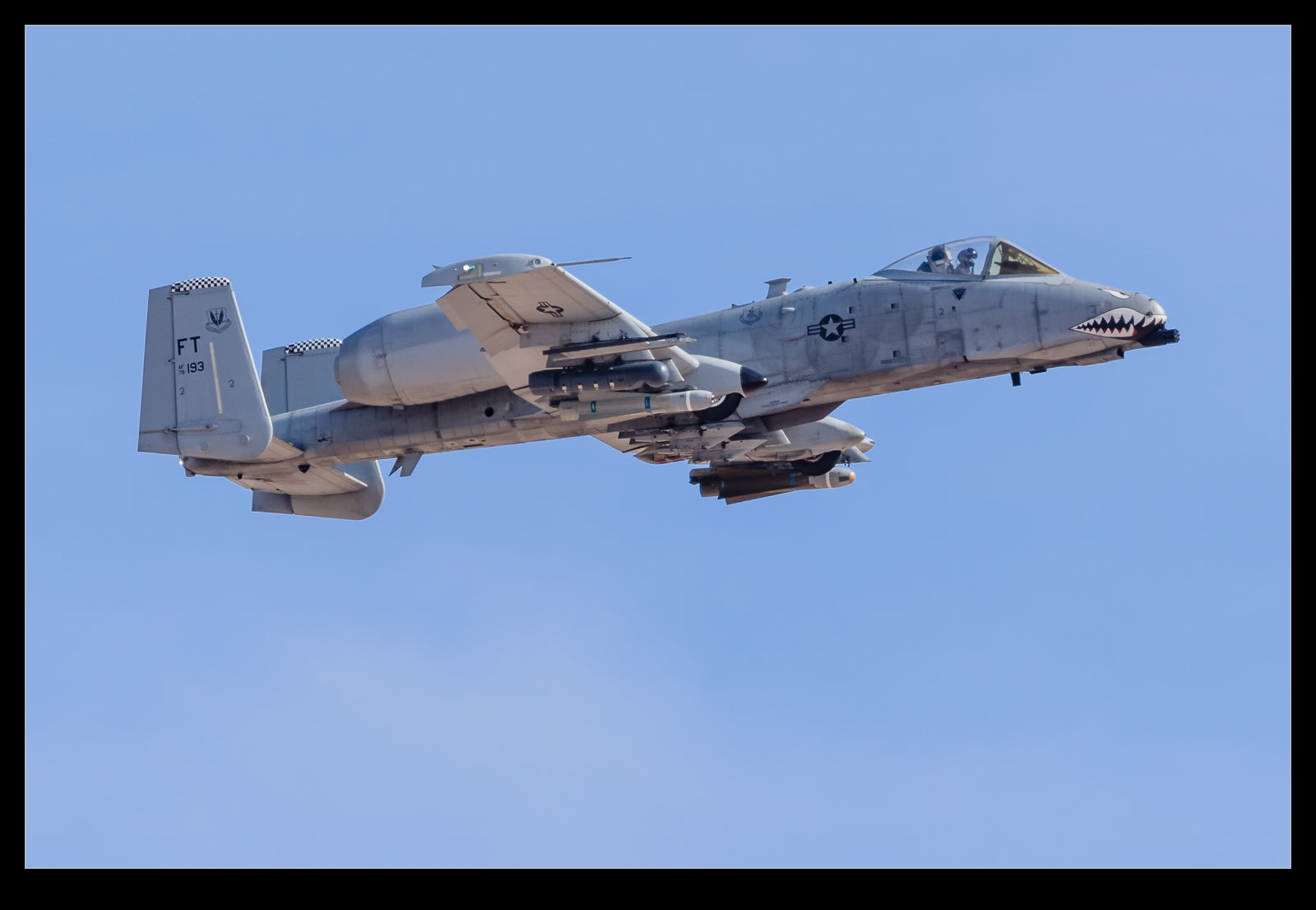 The normal operations at Nellis continue even while Red Flag is on. The local units try to fly their missions at times that fit between the larger exercises. A four ship of A-10s launched in the morning and they were recovering shortly before the Red Flag launch. Rather than run in and break, they flew a straight in approach to runway 21R. Strangely the first jet came passed and it was still gear up as it came close. I have no idea whether they were just keeping it late or had got a call from the tower but the gear came down alongside us. The following three jets were gear down a lot earlier. Let’s say it was deliberate…
The normal operations at Nellis continue even while Red Flag is on. The local units try to fly their missions at times that fit between the larger exercises. A four ship of A-10s launched in the morning and they were recovering shortly before the Red Flag launch. Rather than run in and break, they flew a straight in approach to runway 21R. Strangely the first jet came passed and it was still gear up as it came close. I have no idea whether they were just keeping it late or had got a call from the tower but the gear came down alongside us. The following three jets were gear down a lot earlier. Let’s say it was deliberate…
Another Go at 777-300ER Rotations
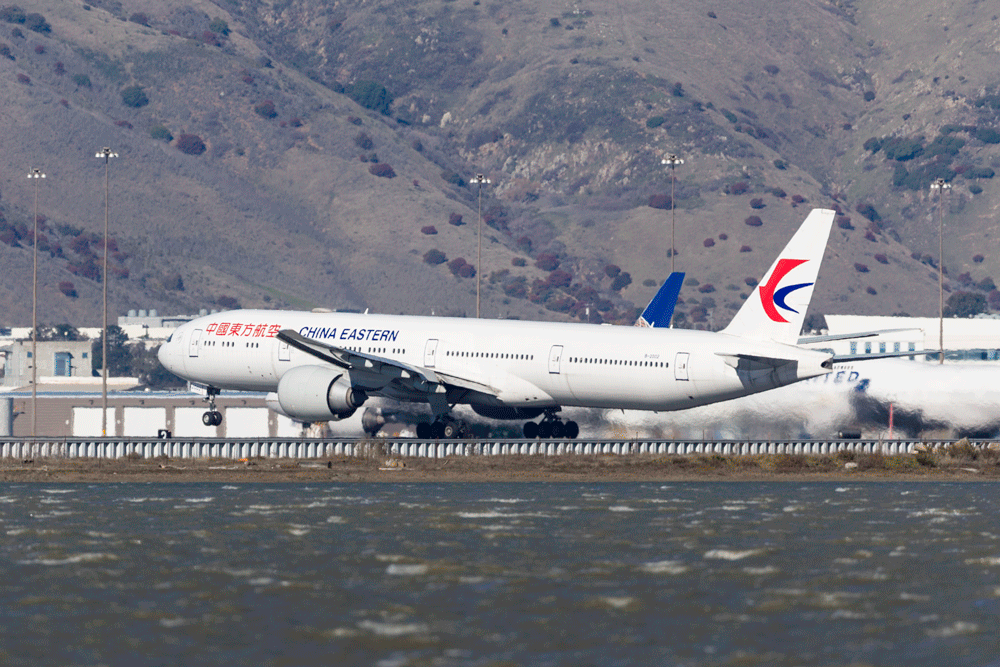 Getting repetitive here. My never ending quest to capture and demonstrate the unusual gear articulation of the Boeing 777-300ER gets another outing. Similar animation of some stills as before. This time the light was good and the distortion was limited so here we go again. I won’t bother with the technique aspects this time. Instead, here is the animation with the rotation about the rear axle pretty easy to see.
Getting repetitive here. My never ending quest to capture and demonstrate the unusual gear articulation of the Boeing 777-300ER gets another outing. Similar animation of some stills as before. This time the light was good and the distortion was limited so here we go again. I won’t bother with the technique aspects this time. Instead, here is the animation with the rotation about the rear axle pretty easy to see.
A380 Gear Sequence
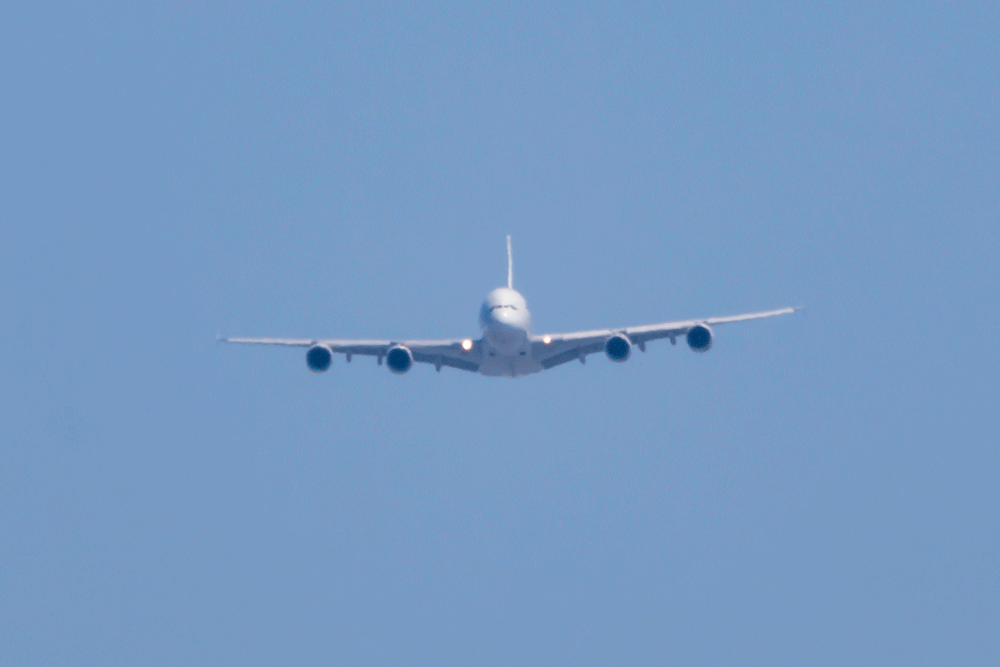 The jets approaching SFO have their gear down long before they reach Coyote Point. However, if you look into the distance, you can see them lower the gear somewhere around the San Mateo Bridge. The A380 has a gear sequence that involves the outer gear coming down first followed by the body gear. I figured I would shoot at long range and then animate the sequence. Heat haze was not great but I think it shows the way things work. Maybe in the winter I will try this again and see if I can get a cleaner image.
The jets approaching SFO have their gear down long before they reach Coyote Point. However, if you look into the distance, you can see them lower the gear somewhere around the San Mateo Bridge. The A380 has a gear sequence that involves the outer gear coming down first followed by the body gear. I figured I would shoot at long range and then animate the sequence. Heat haze was not great but I think it shows the way things work. Maybe in the winter I will try this again and see if I can get a cleaner image.
Closest Yet on the 777-300ER Gear
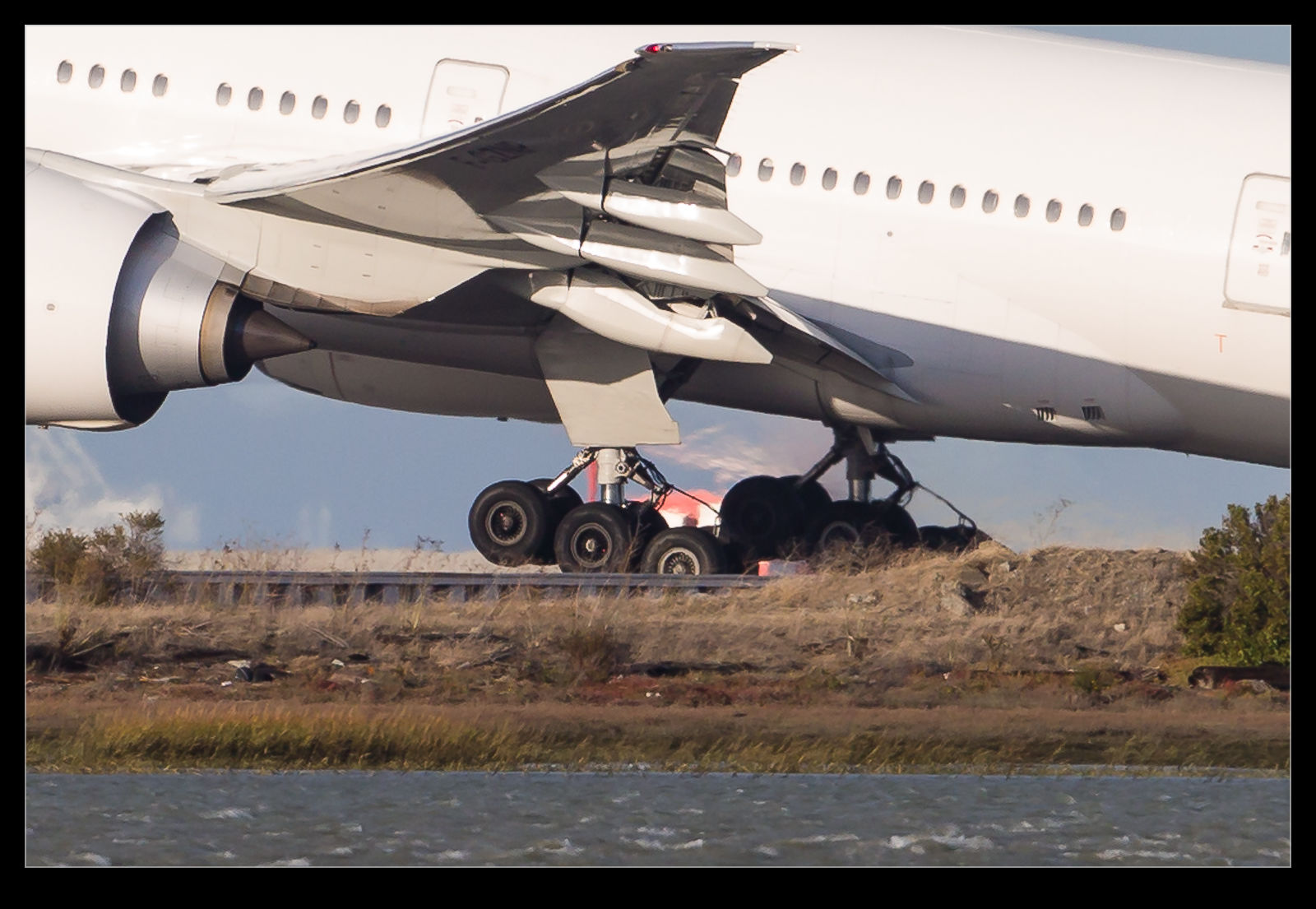 You might not think a really windy day was going to be a great time to head out and take photos with a long lens hand held. This certainly is not ideal but there are some advantages that a really windy day can bring. The purpose of the trip was to catch the new Virgin 787-9 service coming in to SFO on a Sunday afternoon when I didn’t have anything else planned. While the wind was very strong, the light was nice so I gave it a go. What I didn’t realize was that, while it was windy at home, it was really windy at SFO! Everything was operating on the 28s because the wind was above 30kts and gusting to well over 40kts. This also meant that departures got airborne quite quickly given that they started with over 30kts after zero takeoff roll!
You might not think a really windy day was going to be a great time to head out and take photos with a long lens hand held. This certainly is not ideal but there are some advantages that a really windy day can bring. The purpose of the trip was to catch the new Virgin 787-9 service coming in to SFO on a Sunday afternoon when I didn’t have anything else planned. While the wind was very strong, the light was nice so I gave it a go. What I didn’t realize was that, while it was windy at home, it was really windy at SFO! Everything was operating on the 28s because the wind was above 30kts and gusting to well over 40kts. This also meant that departures got airborne quite quickly given that they started with over 30kts after zero takeoff roll!
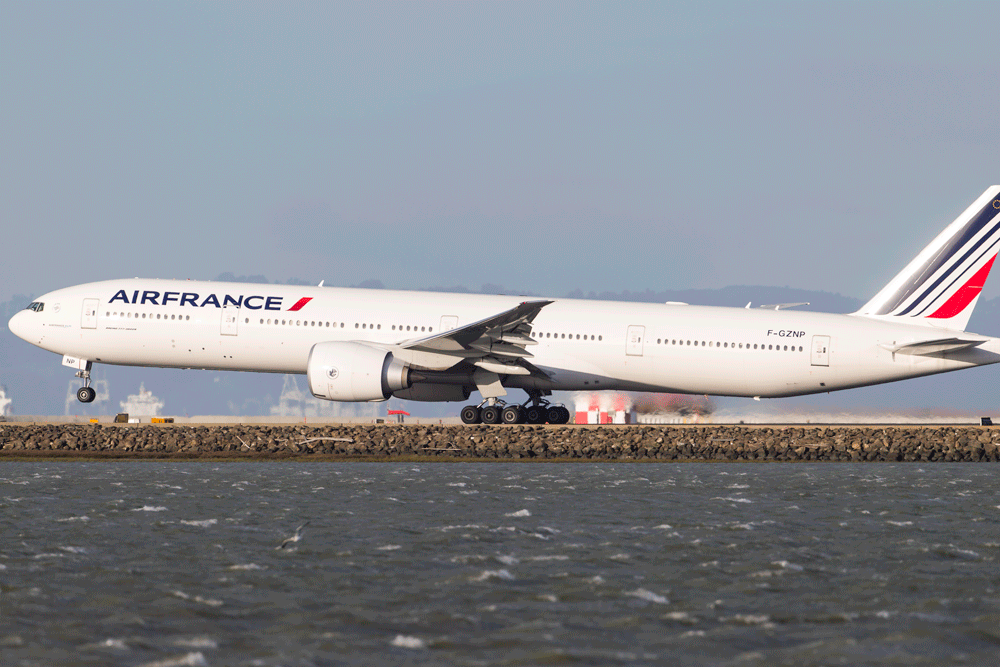 The heavy jets were frequently airborne before the intersection of the runways and this included an Air France 777-300ER. Consequently, I was able to get a clearer view of the gear during rotation than I have managed before. Above are a still of the gear during rotation and also an animated GIF of the rotation in progress. I think I shall consider myself happy with this. It is the best I have got. Unless I get to spend some time out by the runway while one is departing, I doubt I will get a better chance than this.
The heavy jets were frequently airborne before the intersection of the runways and this included an Air France 777-300ER. Consequently, I was able to get a clearer view of the gear during rotation than I have managed before. Above are a still of the gear during rotation and also an animated GIF of the rotation in progress. I think I shall consider myself happy with this. It is the best I have got. Unless I get to spend some time out by the runway while one is departing, I doubt I will get a better chance than this.
Gear Down and Locked
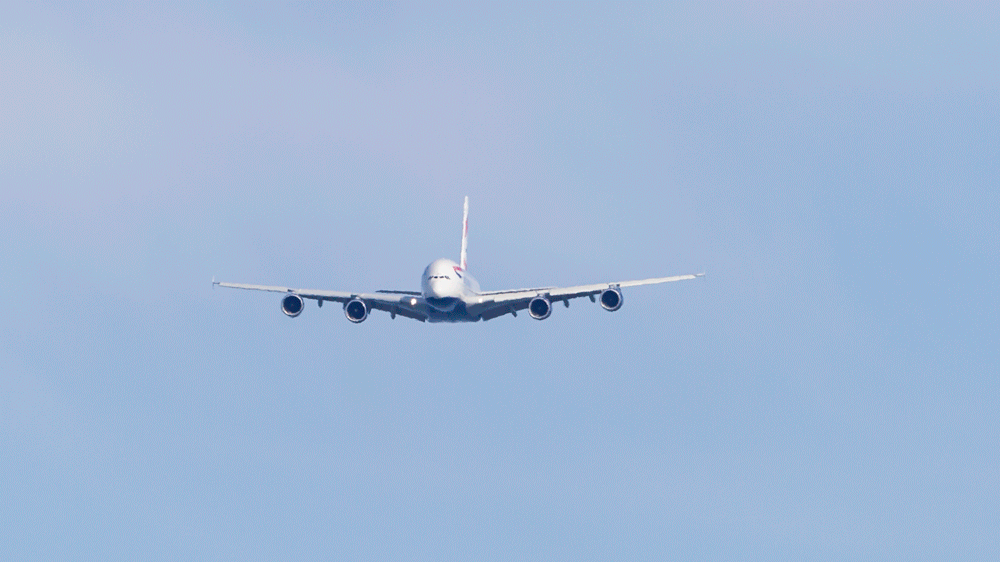 There are some shots that it is just hard to get. They are possible but it depends on what you have available. One idea that I have been trying to come up with a solution for is getting good shots of airliners as they lower their gear. The sequence for lowering the gear is pretty cool and the outline of the plane when it has flaps deployed but no gear is of interest to me too. However, to get a shot like that, you need to be high up further out on the approach. Unless you are in another aircraft, that is tricky to do.
There are some shots that it is just hard to get. They are possible but it depends on what you have available. One idea that I have been trying to come up with a solution for is getting good shots of airliners as they lower their gear. The sequence for lowering the gear is pretty cool and the outline of the plane when it has flaps deployed but no gear is of interest to me too. However, to get a shot like that, you need to be high up further out on the approach. Unless you are in another aircraft, that is tricky to do.
From the normal locations on the ground, the aircraft is just too far away to get a decent shot. Not only is it in the distance and, therefore, small but you also have to cope with atmospheric disturbances like heat haze and dust in the air. It doesn’t make for a compelling shot! Instead, I decided to try something different. I would shoot the sequence of shots of the approach and then animate them. This would mean that the reduced quality of an individual shot would be lost as the sequence would require a certain amount of motion blur anyway.
What I didn’t realize until I tried this on an A380 was that this jet has an unusual gear sequence. I was looking at trying a 747 or an A380 since they are large and have interesting wing configurations when approaching to land. As it turns out, the A380 lowers the outer two gear legs first before the two center body legs come down. I had not appreciated this before trying this shot. Animating the sequence really put the computer under some pressure. Creating a file with over 100 layers and then adjusting each layer to align properly took some time and really made the machine work hard. Ultimately, I got the sequence you can see above.
Another go at the 777-300ER wheels
I have been trying to get evidence of a feature of the Boeing 777-300ER for many years. I previously posted on my efforts to get shots that showed the effect where the main gear bogie is locked to allow the aircraft to get a higher rotation angle at take-off. I have since had another go at this. Taking pictures during the winter has helped since the heat haze is a lot less obvious. Even so, the aircraft are usually quite a distance away. This time I managed to get a sequence that seems to show the effect quite well.
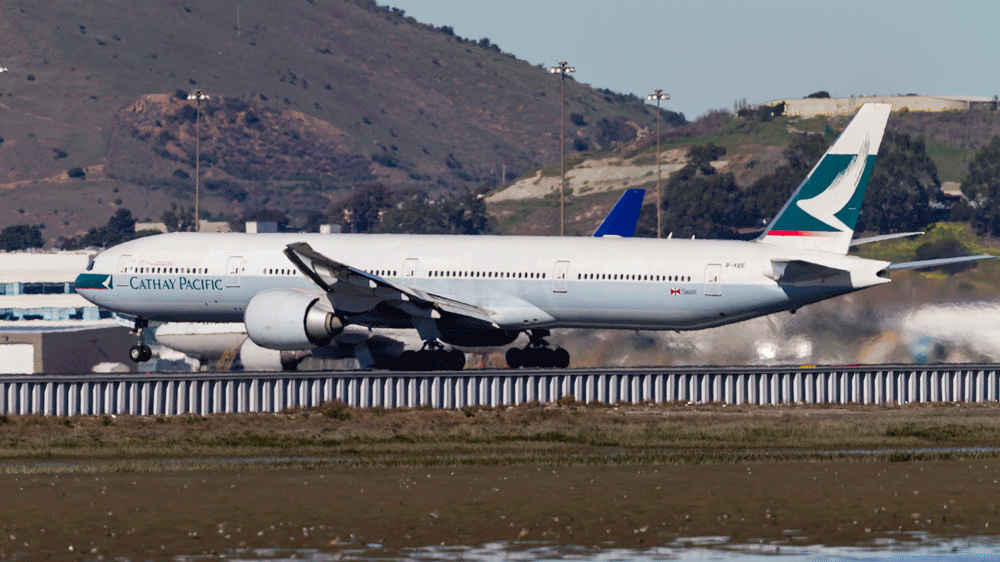 I also had a go at doing the same thing from head on. Not quite as clear cut but you can see some of what is happening.
I also had a go at doing the same thing from head on. Not quite as clear cut but you can see some of what is happening.
Boeing 777-300ER Main Gear
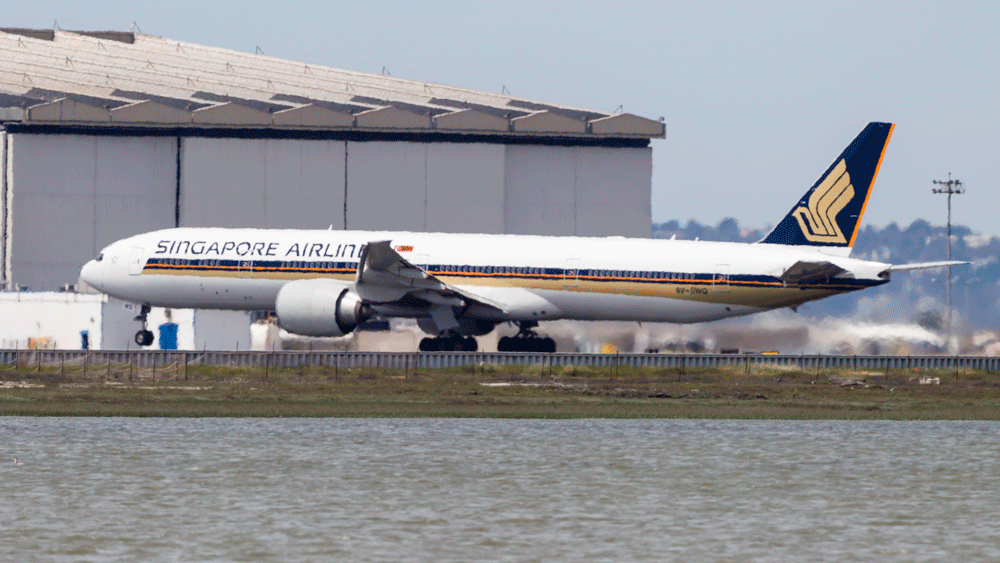 When Boeing launched the 777-300ER, they took the stretched fuselage of the 777-300, a model that didn’t sell particularly well and married it to the updated wing that made use of the fuel capacity of the outboard portion of the wing that had been left when the original concept of a folding wing was contemplated. The increased the weights of the jet, added far more powerful engines and, with the increased fuel capacity, came up with a winning formula that has done a very effective job of killing off the 747.
When Boeing launched the 777-300ER, they took the stretched fuselage of the 777-300, a model that didn’t sell particularly well and married it to the updated wing that made use of the fuel capacity of the outboard portion of the wing that had been left when the original concept of a folding wing was contemplated. The increased the weights of the jet, added far more powerful engines and, with the increased fuel capacity, came up with a winning formula that has done a very effective job of killing off the 747.
One problem that they had to deal with during development was runway length requirements for takeoff. Even with the bigger engines, the long fuselage limited rotation angles at takeoff and meant a higher takeoff speed was required which meant a longer runway requirement. Boeing came up with an interesting solution (after dumping some slightly more curious ideas). The main gear on the 777 has a triple axle bogie. Previously this had rotated about the pin attaching it to the main gear leg. Boeing’s solution was to lock the bogie level during takeoff.
The result of this is to have the rotation of the jet at takeoff to take place around the rear wheels of the bogie rather than the gear leg pin. The slight aft movement of the rotation point allows the aircraft to rotate slightly more nose up and gain a greater angle of attack. This gives slightly more lift for a given speed. This means an earlier takeoff and a shorter runway requirement.
I have tried many times to witness this at work. First, it happens pretty quickly. Second, I am often in a poor position to see the rotation point. Recently I was at SFO to pick up some people. I was getting a few shots prior to their flight arriving and a Singapore 777-300ER was taking off. The rotation point is quite far away (although, if you are in the terminal, you might have a good view) and the heat haze is a problem. However, I decided to get a sequence of shots anyway. Now, how to use them.
Heat haze is crappy on stills but less of an issue with moving images so I decided to animate the sequence. I imported all of the shots into Photoshop as layers in a single document via Lightroom. The hardest part was aligning them. I started at the bottom layer and then progressively made each layer above visible. I then changed the latest top layer blend mode to difference. This makes aligning them a lot easier since everything is black unless it is different. I was focused on the gear so used that as the reference as the fuselage rotated. Once each layer was in place, I changed the blend mode back to normal and moved to the next layer up.
Once they were all aligned, I used the animation timeline to make frames from each layer (and reversed the order since every time I do this they seem to be the wrong way around). Then I could crop in to get the overall view I was after and save the file. A Save for Web allows the generation of the animated GIF and we are done. The image at the top is the final result. It does allow you to see a bit of what is going on if you look closely although it is still a bit hard given the distance, the angle to the ground and the heat haze. I guess I will have to find a location closer next time.
